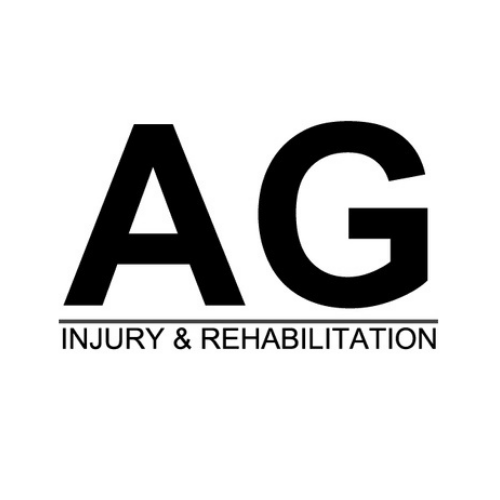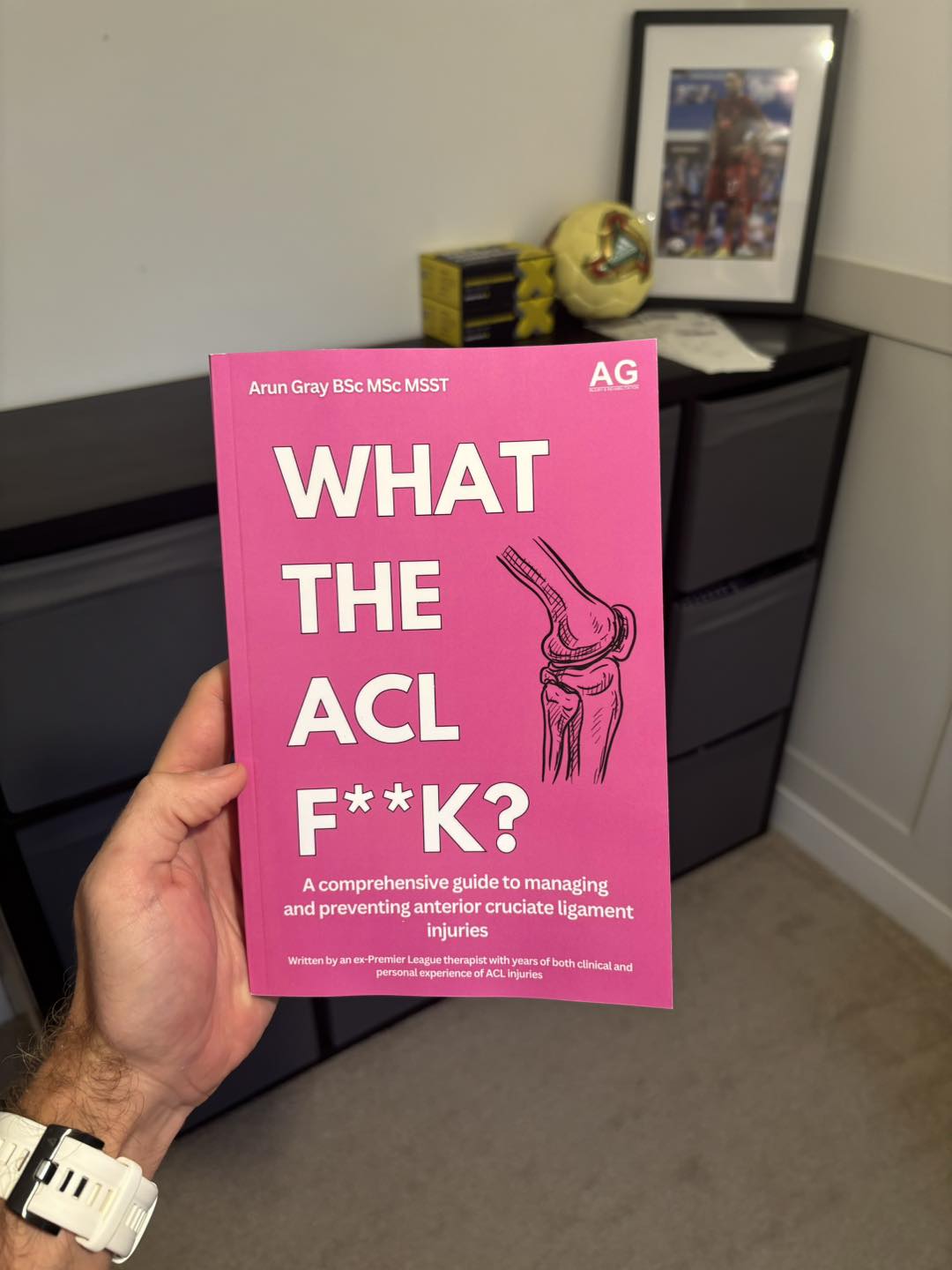ACL injuries, or anterior cruciate ligament tears, are unfortunately a common occurrence in women’s football. Whether you are a player who has recently experienced an ACL injury or someone preparing for reconstruction surgery, this blog aims to provide an in-depth exploration of the unique challenges faced by women in football when it comes to ACL injuries. Drawing on personal experience, clinical expertise, and the latest research, this guide will help you understand the causes, recovery process, and prevention strategies for ACL injuries in women.

Why Are ACL Injuries More Common in Women?
ACL injuries are one of the most feared injuries in football, often requiring months of rehabilitation and a carefully managed recovery. Research shows that women are two to eight times more likely to sustain an ACL injury compared to men. But why is this the case?
The chart below shows a clear increase over time, in the number of serious injuries suffered by players in the Women's Super League.

Anatomical Differences
Women’s anatomy plays a significant role in their predisposition to ACL injuries:
- Wider Pelvis: A wider pelvis alters the angle at which the femur meets the tibia (the Q-angle), placing additional stress on the knee.
- Ligament Laxity: Hormonal fluctuations, particularly during the menstrual cycle, can lead to increased laxity in ligaments, making them more prone to injury.
- Smaller ACL Size: Studies suggest that women’s ACLs are often smaller, which may make them more susceptible to tears under stress.
Biomechanical Factors
- Landing Mechanics: Women tend to land with straighter knees and less hip flexion, which increases stress on the ACL during high-impact activities.
- Muscle Imbalances: Weakness in the hamstrings relative to the quadriceps can contribute to instability in the knee joint, heightening the risk of ACL tears.
The Emotional Impact of an ACL Injury
When I tore my ACL in 2017, the physical pain was immense, but it paled in comparison to the emotional rollercoaster that followed. From the initial shock and frustration to the uncertainty of surgery and rehabilitation, ACL injuries take a toll on mental health.
Coping with the Diagnosis
Hearing that you’ve torn your ACL can feel devastating, especially if you’re passionate about football. Many players worry about their future in the sport and whether they’ll ever return to their previous level of performance.
The Importance of a Support System
Surrounding yourself with supportive teammates, friends, and family can make all the difference. Consider seeking guidance from a sports psychologist to help navigate the mental challenges of recovery.
The Road to Recovery: What to Expect
Recovering from an ACL injury is a marathon, not a sprint. Whether you’re undergoing ACL reconstruction surgery or pursuing non-surgical options, understanding the recovery process is key to setting realistic expectations.
The Phases of Recovery
Acute Phase (0-2 Weeks Post-Injury)
- Focus: Managing pain and swelling, regaining knee range of motion.
- Strategies: Ice, compression, and elevation are critical. Gentle mobility exercises may also be recommended.
Post-Surgery Phase (0-6 Weeks Post-Surgery)
- Focus: Protecting the graft, improving mobility, and initiating basic strength exercises.
- Strategies: Working closely with your physiotherapist to ensure you’re progressing safely.
Rehabilitation Phase (6 Weeks to 6 Months)
- Focus: Building strength, improving balance, and gradually returning to sport-specific movements.
- Strategies: Incorporate a combination of gym-based exercises, proprioception drills, and supervised training sessions.
Return-to-Play Phase (6-12 Months)
- Focus: Ensuring the knee is strong enough to withstand the demands of football.
- Strategies: Gradual exposure to drills, scrimmages, and full-contact play under your physiotherapist’s guidance.
Rehabilitation Tips for ACL Recovery
Consistency is Key: Skipping rehab sessions can significantly delay your recovery.
Listen to Your Body: Pushing too hard too soon can lead to setbacks.
Invest in Proper Equipment: Tools like resistance bands, foam rollers, and balance boards can enhance your home rehab routine.
Preventing ACL Injuries in Women’s Football
Prevention is always better than cure. While some risk factors, such as anatomy, cannot be changed, adopting an ACL injury prevention program can dramatically reduce the likelihood of injury.
Key Components of Prevention Programs
1. Neuromuscular Training
- Focus: Improving coordination and movement patterns.
- Examples: Jump-landing drills, agility exercises, and single-leg stability work.
2. Strength Training
- Focus: Addressing muscle imbalances and enhancing knee stability.
- Examples: Hamstring curls, Bulgarian split squats, and glute bridges.
3. Flexibility and Mobility
- Focus: Ensuring optimal range of motion in the hips, knees, and ankles.
- Examples: Dynamic stretching routines and yoga sessions.
4. Education
- Focus: Teaching players the proper techniques for cutting, pivoting, and landing to minimise stress on the ACL.
Real-Life Example
In my sports injury clinic, we implemented an ACL prevention program for a local women’s football team. Over two seasons, the team saw an 80% reduction in non-contact ACL injuries, highlighting the effectiveness of targeted interventions
What the Research Says

Observations from "Systematic Video Analysis of Anterior Cruciate Ligament Injuries in Professional Female Soccer Players".
Hormonal Influences
A 2022 study published in The American Journal of Sports Medicine found that ACL injuries are more likely to occur during the ovulatory phase of the menstrual cycle. This underscores the importance of considering hormonal fluctuations when planning training and matches.
The Role of Prehab
A 2020 meta-analysis revealed that athletes who underwent a structured 'prehabilitation' program before ACL surgery experienced better post-operative outcomes and faster return-to-play times.
Taking Control of Your Recovery Journey
An ACL injury doesn’t have to mean the end of your football journey. With the right approach to recovery, you can come back stronger than ever. Understanding the unique challenges women face with ACL injuries—and taking proactive steps to address them—is the first step toward reclaiming your confidence on the pitch.
Whether you’re just starting your recovery journey or preparing to return to the game, explore my comprehensive rehabilitation resources designed to guide you every step of the way.

